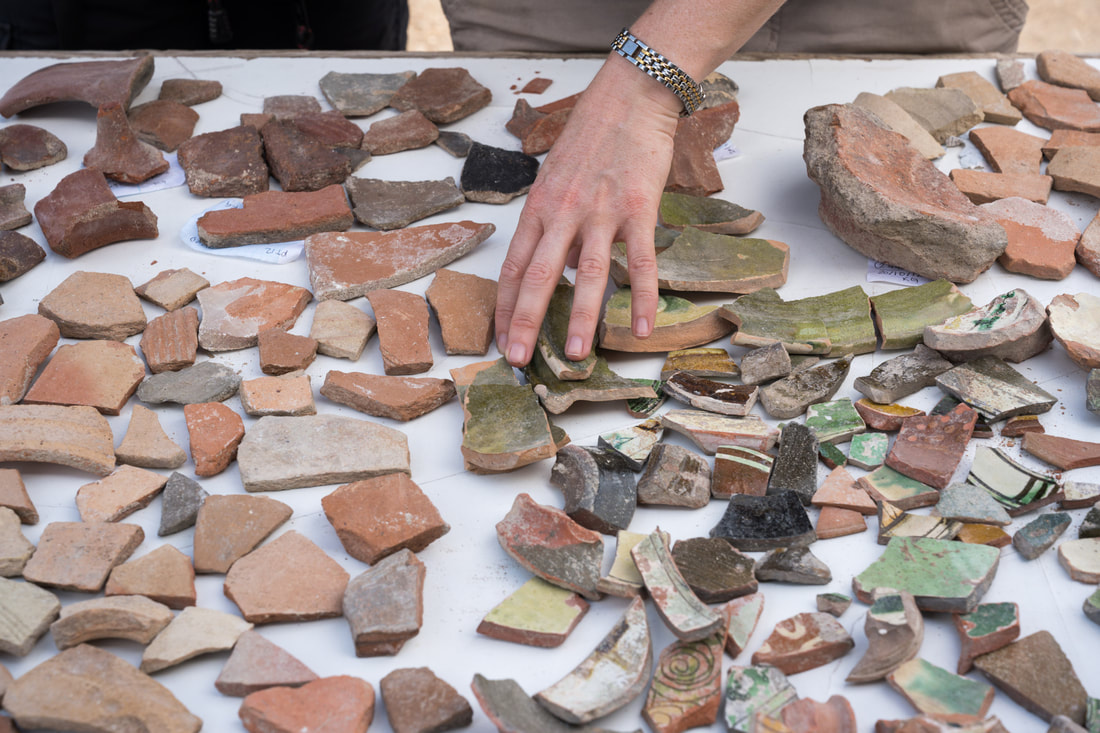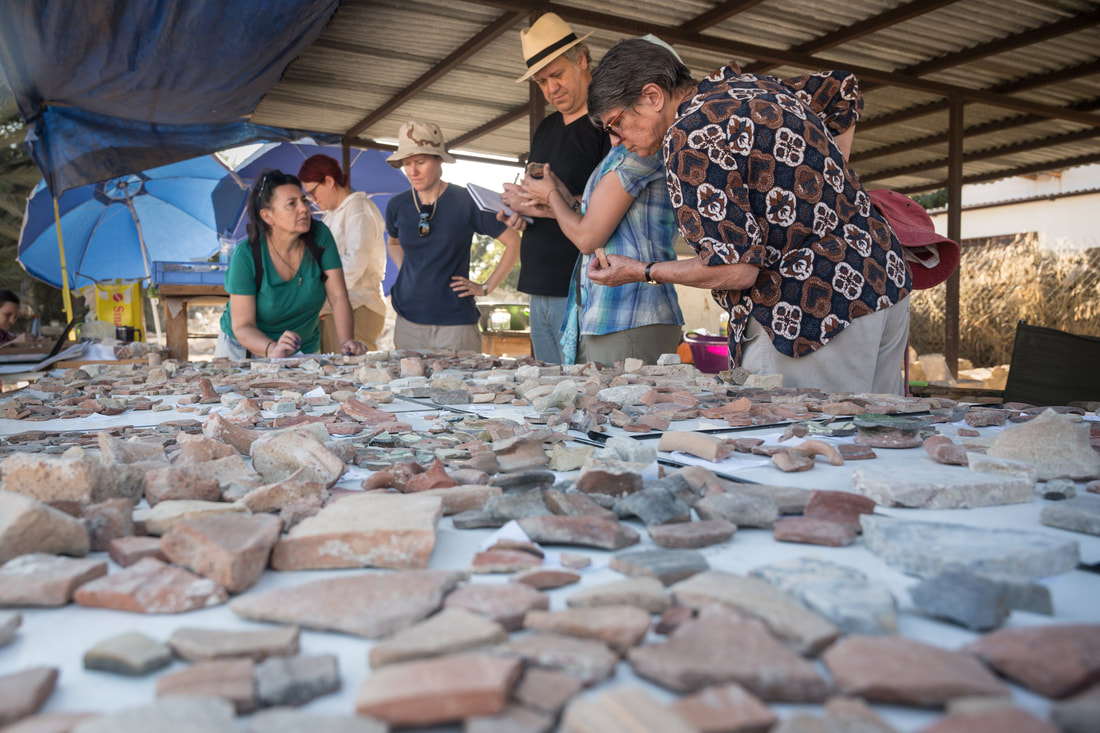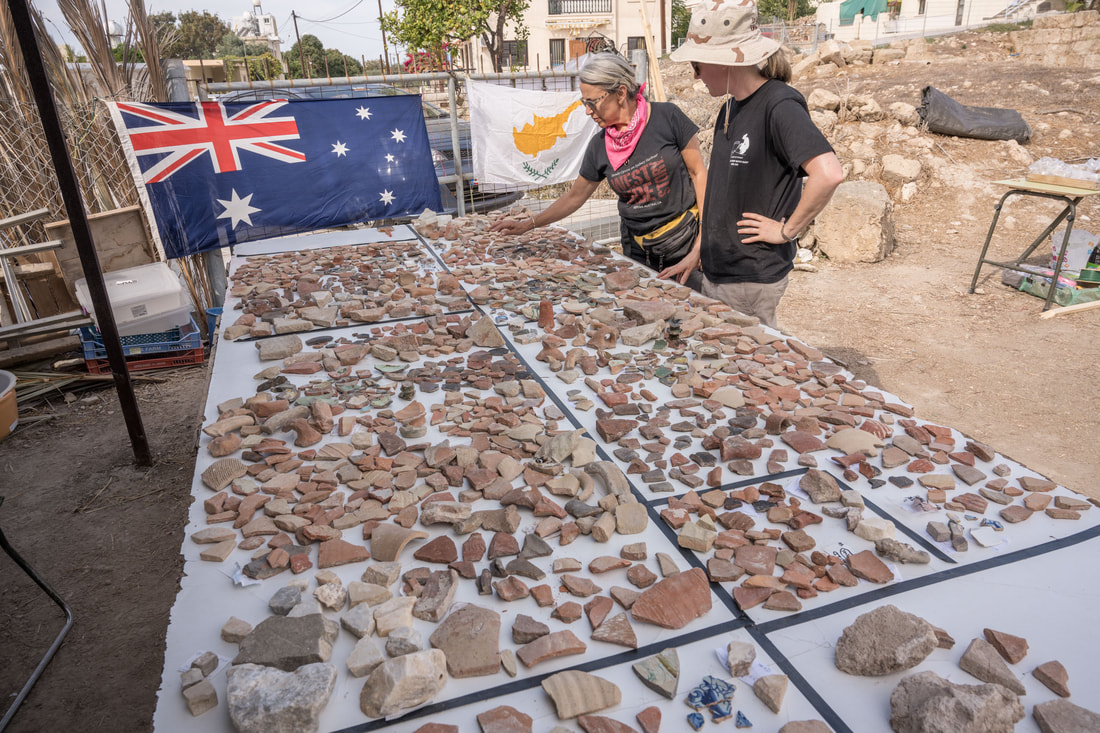The sorting tables on an excavation act as a hub where material that has been dug from the site is grouped together and interpreted visually, and significant observations about the assemblage are made. The tables also serve as a station where key collection management and care can be carried out.
Boxes of finds from past seasons are are being unpacked at the tables, and finds are being laid out according to their trench and deposit number. Finds are being grouped within this according to ceramic and object type, e.g. Amphorae, Roman Red Slip, Cooking Ware; architectural fragment, tesserae, etc.
Finds specialists from the team have been examining each deposit to establish a rough relative chronology, and to earmark key objects for addition to our inventory system and later, possible conservation and publication. It's also at the sorting tables that interesting links such as adjoining pieces of pots, or relationships of objects between and across deposits can be most clearly seen.
Once this interpretive process is complete, finds are being repacked for storage. This is a great opportunity to inspect and replace our packing materials for deterioration over time and conditions, and to ensure labelling is checked and materials updated for longer term storage and accessibility.
- Emma Conroy



 RSS Feed
RSS Feed